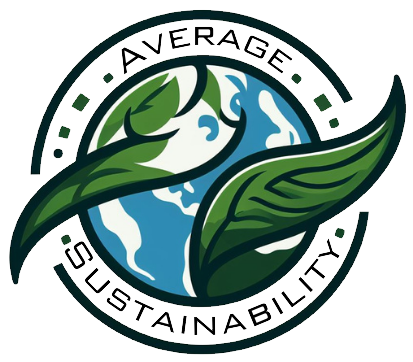In today’s fast-paced world of consumerism and fashion, clothing often doesn’t get the long life it deserves, creating a concerning waste problem and environmental crisis. However, we have a sustainable and budget-friendly solution that has been practiced for centuries – the art of mending. This timeless practice not only helps reduce waste and protect our environment but can also have a significant impact on your finances. In this article, we’ll take a deep dive into the wonderful world of mending. We’ll explore the wide-ranging environmental benefits and, more importantly, we’ll show you how this practice can transform your approach to clothing expenses. So come along on this journey into sustainable fashion and discover the many financial advantages of mending your wardrobe.
Mend your Shirt to Mend the Earth
How does Mending Save the Earth?
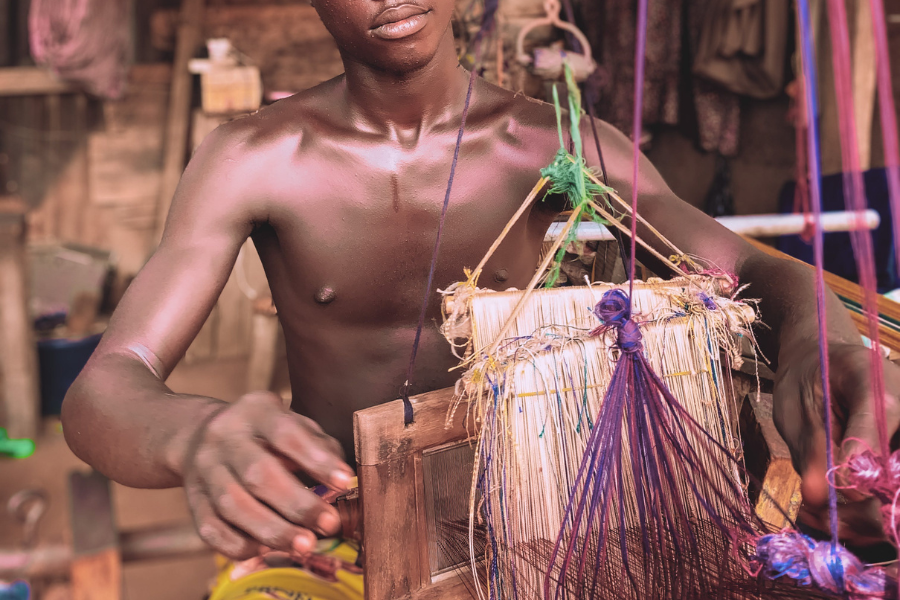
Have you ever heard of fast fashion? It’s this concept of producing affordable clothing that’s inspired by the latest fashion trends. While it has definitely made fashionable clothes more accessible to everyone, there are some important environmental issues associated with it. Let’s take a closer look at some of the key impacts:
Overconsumption of Resources: Fast fashion requires a lot of raw materials, energy, and water to produce those trendy clothes we all love. This puts a strain on precious resources like cotton, oil, and fresh water.
Waste Generation: You know how fashion always keeps changing? Well, fast fashion encourages a mindset of constantly updating your wardrobe, which means a lot of discarded clothing. Sadly, most of these garments end up in landfills and contribute to pollution.
Pollution: The fashion industry can be a heavy polluter. The chemicals used in dyeing and finishing textiles can harm the environment, and the carbon emissions from manufacturing and transportation also play a part.
Water Usage: The textile industry uses a ton of water, especially in processes like cotton farming and dyeing. Unfortunately, this often leads to water pollution due to the release of harmful chemicals.
Synthetic Fabrics: A lot of fast fashion items are made from synthetic materials like polyester, which come from fossil fuels and don’t break down easily. As they break down, they release microplastics into the environment.
Poor Working Conditions: Sometimes, in the rush to produce clothes quickly and cheaply, the workers in factories—often in developing countries—end up with poor working conditions. This not only affects people’s lives but can also have environmental consequences.
Transportation Emissions: Fast fashion involves moving raw materials, components, and finished products across long distances, which results in a significant amount of greenhouse gas emissions.
Short Product Lifespan: You know how sometimes clothes don’t seem to last very long? That’s often the case with fast fashion. These items are typically of lower quality and aren’t designed to be worn for very long. This contributes to the waste problem.
Lack of Sustainable Practices: Unfortunately, many fast fashion companies prioritize cost-cutting and speed over sustainable practices. Although some brands are making efforts to be more eco-friendly, it’s not yet the industry standard.
However, don’t worry! There are ways we can mitigate the environmental impact of fast fashion. For example, sustainable and ethical fashion practices are being promoted, such as mending, and there’s a focus on recycling textiles and adopting circular economy models. As consumers, we can also make a difference by being conscious about what we buy, choosing quality over quantity, and supporting brands that prioritize sustainability. Small steps can make a big impact!
What is Mending?
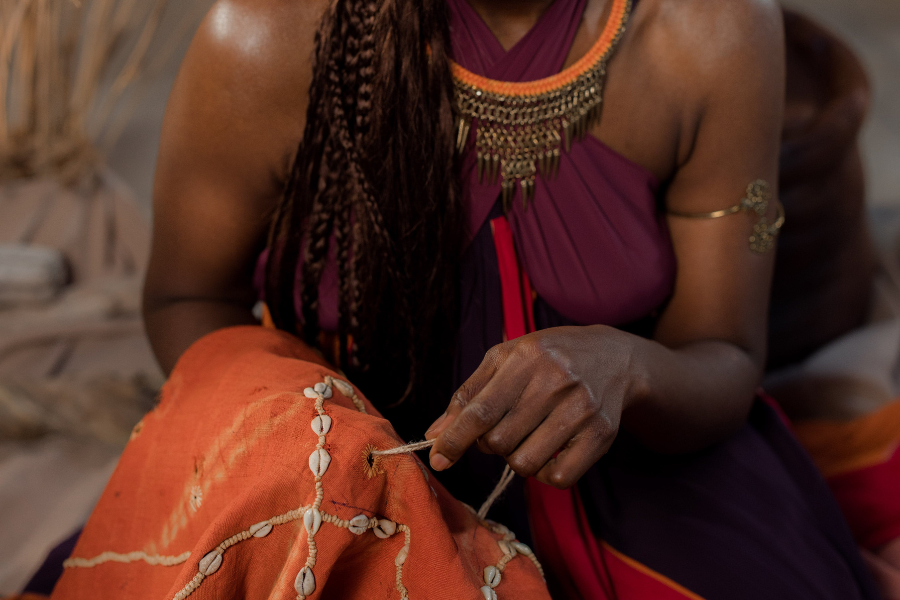
The Art of Mending” refers to the wonderful craft of repairing and restoring damaged or worn textiles and garments. This age-old tradition has been cherished in many different cultures, and it plays a vital role in promoting sustainability and preserving the history and culture of our society. Today, I would love to provide you with an overview of this beautiful art form and delve into its remarkable historical significance.
When we think about mending textiles and garments, we are transported back to a time before our current disposable, fast fashion culture took hold. In many cultures, mending was essential in making the most of our limited resources and ensuring that our clothing and other textiles could withstand the test of time, being passed down through generations.
One of the fascinating aspects of the art of mending is its incredible diversity across various cultures. Through the years, different societies have developed their own unique techniques, patterns, and traditions for repairing textiles, which often reflect their distinctive aesthetics and values. A particular tradition that has captured attention worldwide is the Japanese Boro, known for its stunning patchwork and mending techniques that result in beautifully repaired textiles.
In our efforts to reduce waste and promote sustainability, the art of mending aligns perfectly with today’s values. By repairing and reusing our treasured belongings, we can extend their lifespan, reducing the need for new products. This is especially important when we consider the significant environmental impact associated with the production of new items.
Mending has often been a communal activity, bringing families and communities together. Across many cultures, it has acted as a means for different generations to connect, with experienced elders passing down their mending skills to younger members of the family. This shared practice helps build a sense of community and reinforces our shared heritage.
The techniques used in mending textiles are incredibly diverse. They can involve darning, patching, quilting, embroidery, and many more. Each method employed is intended not only to reinforce and strengthen the textile but also to add beauty and tell a story of its history and usage.
In recent years, there has been a renewed interest and revival in the art of mending. People from all walks of life are turning to these age-old traditions as a response to the environmental and social issues associated with fast fashion. Many individuals and organizations are actively promoting mending workshops and sharing resources to help others gain these valuable skills.
Beyond its practical benefits, mending is also an opportunity for personal expression. While the primary goal is to repair and extend the life of an item, it can also be a chance to infuse unique, artistic touches into textiles. This transforms the mending process into a form of creative expression, giving us the opportunity to put our personal stamp on our beloved possessions.
Lastly, mending has the added economic benefit of saving money in the long run. By reducing the need for frequent clothing replacements, this practice aligns perfectly with the principles of frugality and sustainable living.
The art of mending is an age-old tradition that embodies sustainability, cultural diversity, and community bonds. It is a valuable skill and practice that has found renewed relevance in today’s world. As we place increasing importance on environmental concerns and desire meaningful, lasting connections with our possessions, mending provides us with a way to cherish what we have and preserve our beautiful history and culture.
What Do I Need?
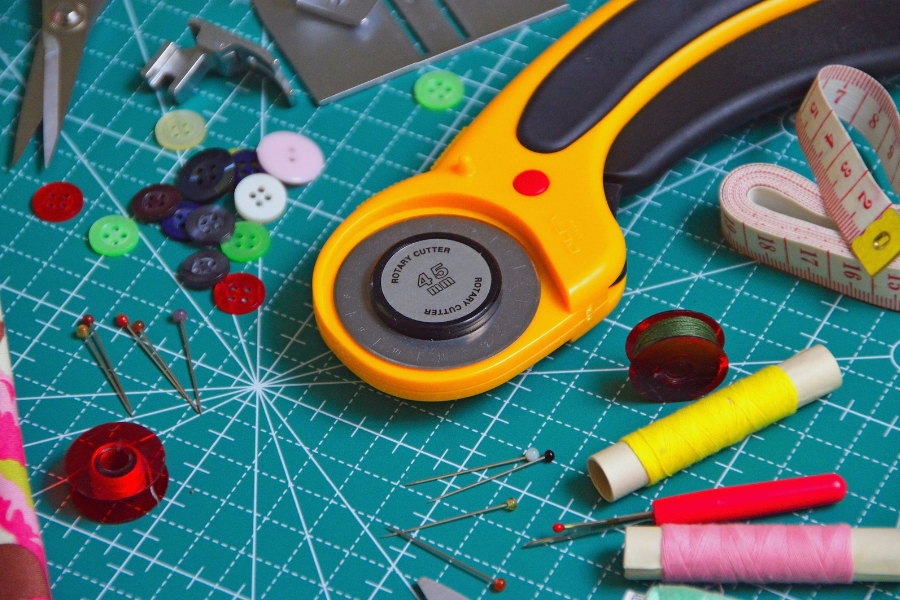
Repairing clothing is a practical and eco-friendly way to make your clothes last longer. To do it effectively, you’ll need some basic tools and materials. Here’s a list of commonly used tools for clothing repair:
- Needles: You may need different types of needles for various mending tasks. For example, you’ll need sharp sewing needles, darning needles, or embroidery needles. Make sure to have a variety of sizes and types on hand.
- Thread: Depending on the task, you might need various types of thread, such as all-purpose sewing thread, embroidery floss, or special thread for specific fabrics like denim or leather.
- Scissors: A good pair of fabric scissors is essential for cutting thread, and fabric making clean cuts when needed.
- Pins: Straight pins are helpful for holding fabric together before sewing. You might also find safety pins useful for certain repairs.
- Thimble: Using a thimble can protect your fingers while hand-sewing, especially when working with thicker fabrics.
- Measuring Tape: Having a measuring tape handy is useful for taking accurate measurements and making sure your repairs are the right size and in the right place.
- Seam Ripper: A seam ripper is a handy tool for removing unwanted stitching without damaging the fabric.
- Iron and Ironing Board: Ironing your garments before and after mending can ensure a smooth and neat finish.
- Fabric Marker or Chalk: These tools can help you mark areas that need repair or indicate where your stitches should go.
- Fabric Patches: Fabric patches come in various colors and materials and can be used to reinforce weak areas or cover holes.
- Buttons and Snaps: If you’re mending garments with missing buttons or snaps, make sure to have replacements that match the original ones.
- Elastic: Elastic can be useful for replacing or repairing waistbands, cuffs, or other stretchy areas.
- Sewing Machine: If you’re dealing with more extensive repairs or alterations, a sewing machine can be a valuable tool. It saves time and provides stronger, more consistent stitching.
- Mending Kits: You can also find pre-made mending kits that include some basic tools and materials, making it convenient for simple repairs.
- Needle Threader: If threading needles is challenging for you, a needle threader can be very helpful.
- Magnifying Glass or Reading Glasses: These can come in handy for working on fine details or if your eyesight is not as sharp as it once was.
- Instructional Resources: Having a sewing or mending book or access to online tutorials can be beneficial, particularly if you’re new to mending.
Remember that the specific tools you’ll need can vary depending on the type of clothing and the extent of the damage. Having a well-equipped mending kit can save you money and help reduce textile waste by allowing you to repair your clothing instead of replacing it.
Mending Types and Techniques

Mending is such a useful process! It’s all about taking the time to repair damaged or torn items so that they can continue to be useful for longer. The specific techniques you use for mending can vary depending on the material you’re working with. Let’s go over some general techniques and materials that are commonly used:
- Hand Sewing is a versatile technique that can be used on a wide range of fabrics and items. It’s as simple as using a needle and thread to sew up holes, reattach seams, or reinforce weak areas. Some basic stitches you can use include the running stitch, backstitch, whipstitch, and slip stitch.
- Patchwork is a great way to cover a hole or reinforce a weakened area. This technique is often used on clothing, quilts, and other fabric items. It can serve a functional purpose while also adding a decorative touch. You can attach patches using iron-on patches, hand sewing, or even machine sewing.
- Darning is perfect for repairing holes or thinning fabric, especially on knitwear like socks and sweaters. You simply weave a needle and thread across the damaged area to create a new layer of fabric.
- Invisible Mending is a specialized technique that works wonders on delicate fabrics like wool. It involves weaving a piece of matching fabric into the damaged area, making the repair nearly invisible.
- If you’re looking for stronger and more durable repairs, you might want to try machine sewing. Sewing machines are great for mending clothing, bags, and other fabric items. Common stitches you can use include the straight stitch, zigzag stitch, and overlock stitch.
- Sometimes, sewing just isn’t possible or practical. That’s where fabric glues or adhesive patches come in handy. They can be used to temporarily mend items like tents, umbrellas, and certain pieces of clothing.
- If you’re dealing with knit or crochet items, such as sweaters or blankets, you can use the same techniques you used to create the item in the first place. This might involve picking up dropped stitches, adding new yarn, or re-knitting damaged sections.
- Leather mending usually involves using leather glue, leather patches, and a combination of sewing and stitching. This can be done by hand or with a leather sewing machine. It’s perfect for repairing or reinforcing leather items like shoes, belts, and bags.
Remember, the best mending technique will depend on the specific item you’re repairing and the materials involved. It’s always important to consider safety and skill level. If you’re unsure, it’s always a good idea to consult relevant guides, tutorials, and professionals, or you could look on YouTube or find a Grandma.
How to Select Fabric or Thread Mending?
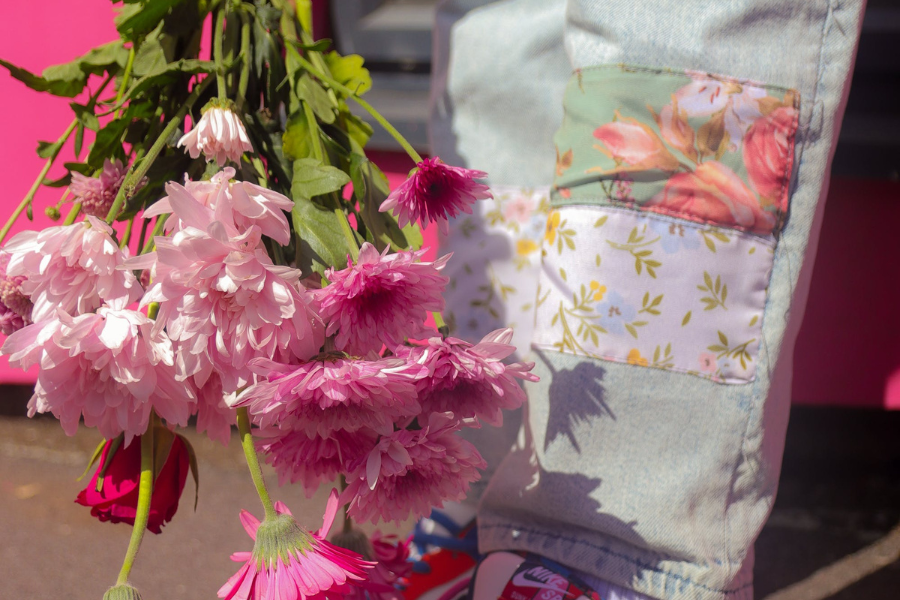
Selecting the right fabric and thread for mending is super important to make sure your repair turns out great and lasts a long time. Here are some things to think about when choosing fabric and thread for your mending project:
- Match the Fabric Type: Try to pick a fabric that’s similar to the material you’re fixing. For example, if you’re patching up denim jeans, use denim fabric for the patch. This way, your repair will look consistent with the original.
- Consider Fabric Weight: Pay attention to how thick or thin the fabric is. If it’s on the lighter side, go for a lightweight patch or fabric for mending. For heavier fabrics, choose a patch that’s also on the heavier side.
- Color Matching: It’s always nice if the fabric you’re using matches the color of the item you’re fixing. If you can’t find the exact match, try to find a color that goes well with the original fabric, or go all out and make a statement.
- Thread Type: Make sure you’re using the right kind of thread for your project. There are different types like cotton, polyester, nylon, and silk. Here are some things to remember:
- Cotton thread works well with natural fibers like cotton, linen, and rayon.
- Polyester thread is pretty versatile and can be used with lots of different fabrics.
- Nylon thread is strong and tough, which makes it perfect for heavy fabrics and outdoor stuff.
- Silk thread is great for delicate fabrics and lightweight materials.
- Thread Color: Look for a thread color that’s as close as possible to the fabric color. If you can’t find the exact match, choose a color that blends in nicely.
- Thread Weight: Keep in mind how thick or thin the thread is. Thicker threads are good for making strong seams, while thinner ones work better for delicate fabrics. Try to match the thread weight to the fabric weight.
- Specialized Thread: There may be some cases where you need special thread, like heavy-duty or outdoor thread for fixing things like tents or backpacks, or elastic thread for stretchy fabrics like swimwear.
- Needle Type and Size: Use a needle that’s right for your fabric. Needles come in different types and sizes, with thicker ones for heavy fabrics and thinner ones for lightweight fabrics. There are specific needles for leather.
- Fusible Interfacing: If you’re working with a delicate or fraying fabric, you might want to consider using fusible interfacing to strengthen the area before sewing the patch.
- Thread Tension: Make sure the tension on your sewing machine matches the fabric and thread you’re using. If it’s not right, your seams could end up weak or not looking great.
- Pre-Wash and Press: It’s a good idea to wash and press both the fabric you’re fixing and the patch material beforehand. That way, you can prevent any shrinking or warping after everything is sewn up.
So, to choose the right fabric and thread for mending, just remember to match fabric types, weights, and colors, and consider the needs of your specific project. By paying attention to these things, you’ll have a successful repair that lasts a long time.
Let’s Talk About Money

Repairing clothing and other items instead of throwing them away when they have minor damage or wear can actually be quite beneficial for your wallet in the long run. Let’s take a look at some ways in which mending can save you money over time:
- First and foremost, repairing damaged or worn items can significantly extend their lifespan. This means you won’t have to replace them as frequently, ultimately saving you money on buying new ones.
- Mending also promotes a more sustainable and mindful approach to consumption. By fixing and reusing items, you reduce the need to constantly buy new things, which can translate into significant long-term savings.
- Clothing expenses can really add up, but with mending, you can get more wear out of your existing wardrobe. This means you won’t have to frequently go out and buy new clothes, putting some extra cashback in your pocket.
- Plus, mending provides an opportunity to get creative and personalize your items. You can transform old clothes into something unique and stylish, saving money on buying new trendy pieces.
- Let’s not forget about the environmental impact. Repairing and mending items reduces waste, which is not only good for your wallet but also for the planet. By minimizing waste, you’re also cutting down on waste management costs and reducing the need for new resources.
- Learning to mend and repair items can also save you money by reducing the need for professional repair services. Basic sewing and other repair skills can be incredibly valuable when it comes to maintaining and extending the life of various items.
- The practice of mending and maintaining items teaches valuable life skills, like budgeting, resourcefulness, and the importance of taking care of what you have. These skills can have a positive impact on your finances in the long run.
- Mending encourages you to invest in higher-quality items that are worth repairing, rather than buying low-quality, disposable items. In the long term, this can save you money because durable items tend to last longer.
- Not only that, but people often develop emotional connections with items they’ve repaired or customized. This can lead to a more frugal and mindful approach to spending, as you begin to appreciate the items you’ve put time and effort into mending.
- Lastly, mending doesn’t just address existing damage; it can also involve preventative maintenance. Regularly checking and reinforcing seams, buttons, and other potential trouble spots can prevent costly repairs or replacements down the line.
While it may require an initial investment in tools and materials, mending can ultimately save you a significant amount of money over time. Plus, it aligns with the principles of sustainability and responsible consumption, which can benefit both your finances and the environment in the long run.
Thank you for Mending your Shirt and Saving the Earth!!
Embracing the age-old tradition of mending is not only a responsible choice for the environment but also a smart move for your finances. Every stitch you make is a step towards a greener future, benefiting both our planet and your financial stability. With just a needle and thread, you can embark on a journey towards a more sustainable and budget-friendly wardrobe. Mending is not just about fixing clothes; it’s a creative expression and a powerful tool for conscious consumerism. By joining in, you become a part of the solution to the environmental impact of fast fashion. So why not start mending your way to a brighter, greener future today? Both the planet and your wallet will thank you for it!
